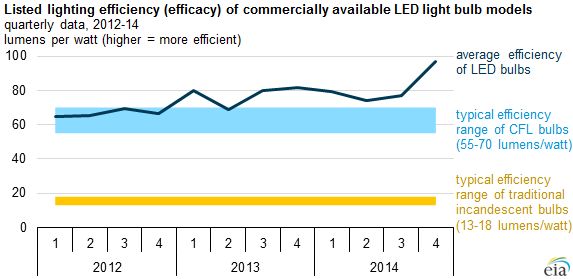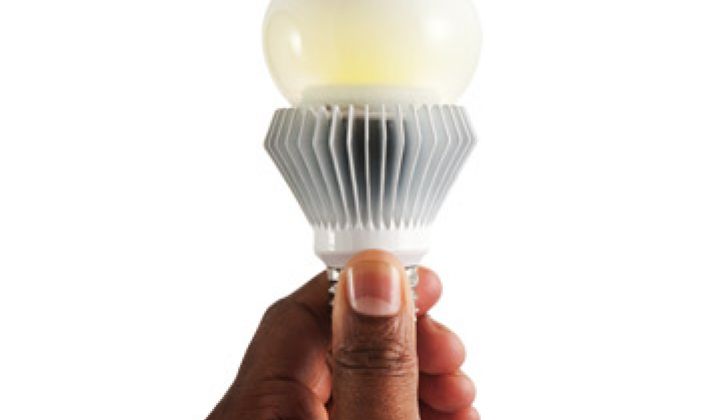Light-emitting diode bulbs have long been far more efficient than incandescent or even compact florescent bulbs, but that gap has widened even more this year.
The average efficiency of LEDs stood at around 80 lumens per watt in mid-2013, but is now closer to 100 lumens per watt, according to the U.S. Energy Information Administration. That is far higher than the typical efficiency of CFLs, which ranges from approximately 55 to 70 lumens per watt.

The increased efficiency has also come with falling prices, which utilities are taking advantage of by offering additional rebates. Energy efficiency programs have poured more than $400 million annually into energy-efficient lighting in recent years, which includes LEDs.
LEDs still have a lot of ground to cover, however. Total shipments of the bulbs exploded from about 9 million bulbs in 2011 to more than 45 million bulbs in 2013, but even that figure still accounts for less than 3 percent of the market share for general lighting, according to the EIA.
One key factor to LED growth, according to Jim McHale, founder of London-based consulting firm Memoori, will be smart control systems for solid-state lighting in both the residential and commercial sectors. Controls are becoming more affordable with options such as no-money-down financing as LED bulb prices are also dropping for many applications.
However, even though costs have come down, many LEDs still do not have a color rendering index that comes close to that of incandescents, which have a CRI of 100.

A report from the U.S. Department of Energy last year found that some efficiency may have to be sacrificed to meet the color requirements of consumers, who often prefer a multi-directional, warm light.
Although LEDs still have substantial inroads to make, “It’s no longer if, but when, LEDs will take over,” Jon Guerster, CEO of Groom Energy Solutions, noted earlier this year after Lightfair 2014.



